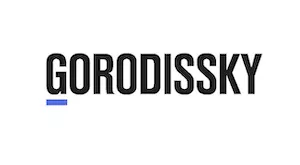At the end of October, the media spotted an offer to sell the painting "Suprematism" by the famous avantgarde artist Kazimir Malevich, posted by an anonymous seller on a popular private ads service on the Internet1. Art market players and experts commenting on the news drew attention to the gaps and shortcomings in the accompanying documentation provided by the seller and a rather low price of the painting2.
The seller lost interest in the deal and withdrew the advertisement3, however the discussion around the events clearly showed that the seller and the buyer need to take into account a bunch of important aspects in order to successfully conclude a mutually beneficial deal in relation to such a specific item as a work of art. Some of them are outlined below.
Purchase of an Artwork and Acquisition of the Exclusive Rights
Above all, the buyer needs to decide why he is buying an art object, what rights he wants to have in relation to it, and compare his intentions with the seller's offer.
Works of art are quite a popular investment tool, which is in steady demand and makes long-term profit. However, people collect art not only because it is an asset that traditionally considered as a valuable one, but also because it provides aesthetic pleasure and reflects life experiences, values and interests of the collectors4.
In accordance with the Russian laws, the transfer of ownership to a thing does not entail the transfer or granting of any intellectual rights to a work expressed in it, with one exception: in the case of alienation of the original work directly by the owner of the exclusive rights who is not the author5.
Thus, concluding a deal on the purchase of a painting directly with its author — the artist, and without additionally stipulating the issue of the acquisition of the exclusive right, all that the buyer will gain is the painting itself as a thing. It can be hung on the wall in one's home, exhibited at exhibitions or mentioned in art catalogs6 but it cannot be copied and sold without the consent of the copyright holder, for example, as postcards or other souvenirs containing reproduction of the painting, even if such painting is a portrait of the buyer himself. The legislator restricts the range of possible ways the original copy can be used to a very few and prevents any opportunity to make profit of it, unless otherwise provided by an agreement with the author or other copyright holder.
As a general rule, the exclusive right to a work is valid for the entire life of the author and within seventy years afterwards (since January 1 of the year following the year of the author's death)7. The absence of provisions on the alienation of the exclusive right to the artwork or on its licensing in the subject matter of the transaction concluded during this period can deprive the buyer of the opportunity to obtain additional income from the use of the artwork.
The purpose of the purchase not only determines the scope of the rights required by the buyer, but also the degree of care to which the buyer complies with legal formalities. For example, the purchase of an artwork at a flea market is rarely accompanied by a written contract. To meet the aesthetic needs of the buyer, such a spontaneous purchase is quite justified, but, from the investor's prospects, the lack of documents significantly reduces the value of the art object as an asset and makes it difficult to verify the legal purity of the rights during subsequent resale.
Authenticity of the Artwork
Having resolved the issue of the scope of acquired rights, the buyer and the seller need to verify and prove the authenticity of the artwork, respectively. This is where the entire arsenal of available technical, technological and art historical research tools comes to help. Individual circumstances of each case, such as type of artwork, its theme, the materials used by the author during its creation, the place and date of creation, storage conditions — all of this determinates the types of expertise required in each case and the list of preferable expert organizations or experts.
Despite the fact that expert opinions do not have an "expiration date", the technical tools are constantly evolving, the accuracy of the research is growing, so conducting the necessary research right before the transaction or as its condition minimizes possible risks.
Unfortunately, even impeccable reputation, expert experience and the most modern research methods are not able to completely eliminate the risk of forgery or misattribution of an art piece.
Both art historical and technical expertise are a comparison with a base (model): with a whole series of authentic works of the author, their X-rays, with samples of the author's signatures and handwriting, with a database of paints used by the author.
The conclusion that a work belongs, for example, to the authorship of a certain artist is usually made, among other things, on the basis of affiliation of the painting to his stylistic features and manner.
The determination of the artist's manner of painting, in turn, is the result of a comprehensive analysis of historical and biographical information.
For example, for a long time, experts had troubles in understanding the individual creative manner of Alexey Korovin and in separating his paintings from the works of his father, the famous impressionist artist Konstantin Korovin, who sometimes signed his son's works in order to increase their value8. In this regard, the revision of the attributions made in respect to this part of father's artistic heritage resulted in a loss of its value.
Technological progress is actively introducing artificial intelligence (AI) into various areas of our lives. The art world is no exception. In particular, there has been a recent debate among art historians about whether AI-based applications will be able to replace experts in the field of authentication of artworks. In particular, this problem was recently discussed in connection with the scandal that broke out in respect of the fact that thanks to an AI program, an attempt was made to attribute to Raphael's painting "Tondo De Brecy", which allegedly depicts the same Madonna and Child as in the painting "Sistine Madonna" by Raphael9. However, experts unanimously agree that AI programs can only be a supplement, but not a substitute for the professional view of an expert.
Provenance
The question of the origin of the art object, the history of its possession (provenance) is also important. An example of an almost flawless chain of ownership of a painting, where it is possible to trace each transaction from the artist to the last owner, is the painting by the Spanish artist Pablo Picasso, "Woman with a Clock"10, which was recently sold at Sotheby's. In 1966 it was bought by Galerie Beyeler (Switzerland) directly from the artist.
In 1968, it was transferred to the collection of the Pace Gallery (USA), where it was acquired by the collector Emily Fischer Landau, in whose collection the painting had been stored for more than 50 years by the time of the last sale.
Continuity of provenance is extremely important for the buyer. When a "blank spot" appears in the history of ownership, it can spoil even the most impeccable biography of the art piece.
The specificity of the Russian art market lies in the fact that in the 20th century our country has experienced many upheavals, so it is often quite difficult to document the ownership and succession of rights. Compared to the Western market, Russian collectors traditionally rely more on the opinion of experts11 than on information about the origin of an art object.
When studying the provenance, the buyer should not neglect the verification of the acquired art object according to all available registers of missing cultural heritage.
In Russia, such register is maintained by the Ministry of Culture of the Russian Federation, which, upon receipt of the relevant request, enters information about the fact of loss, gap, or theft of cultural heritage into the relevant register12 However the publicly available part of the register is very limited and incomplete. Similar registers exist in other countries13. The largest international databases are the register of art objects put on the international wanted list14, and the private database — www.artloss.com.
Even if the origin of the art object is not in doubt, in any case, in the art market deals, the buyer will also take into account the identity and reputation of the seller.
Purchasing an art piece directly from the author is the most preferable option for the buyer, but this is more of a rarity than a common practice.
Most transactions in the art market take place with the participation of galleries, art dealers, antique shops and auction houses. There are not so many serious collectors in Russia.
Nevertheless, even if the seller and the buyer mingles in the same field for a long time, know each other and have no doubts about each other's business reputation, it is highly untenable to neglect the elementary verification of representative's authority to conclude a contract and negotiate on seller's behalf, as well as the legal personality of the seller himself and the absence of any encumbrances on his rights to the object offered for sale, for example, the rights of the seller's spouse to art work that is their joint property.
There are a lot of examples when blind faith in each other or brokers forced buyers and sellers to enlist the help of law enforcement officers for the protection of their rights15.
Proper Contract
A well-drafted contract, including all the essential conditions and guarantees of the seller, will mitigate the risks of the buyer as a weak party of the deal in order to avoid the situation of its recognition as nonconcluded or invalid. One of the most important issues is that the work to be purchased, should be described in full details in the subject of the contract. It is highly recommendable that the parties indicate its author and title, the year of creation (it can be presumptive), give a verbal description or insert a photo of the work.
If necessary, they can include provisions on the alienation of the exclusive right to the work or determine the scope of license rights.
Of course, the reimbursable deal should provide for remuneration both for the acquisition of the work and for the transfer of exclusive rights or granting a license, if applicable.
Despite the fact that in the market of artworks and antiques, the relationships between the seller and the buyer usually are based on the principle of caveat emptor, which means "quality at the risk of the buyer", this does not prohibit the buyer from providing for the seller's liability measures applicable to a particular type of transaction (sale agreement, commission agreement) and his assurances about the authenticity of the artwork.
These provisions will be the minimum guarantee that in a disputable situation the buyer will be able not only to get back the remuneration paid to the seller, but also to recover a penalty from him for improper performance of obligations.
When concluding a transaction with a foreign element on the seller's or buyer's side with a cross-border transfer of the acquired object, it is necessary to take into account the peculiarities of the legal regulation of the circulation of artworks in another jurisdiction, which may affect the validity of the contract, as well as the requirements of Russian legislation and the law of the Eurasian Economic Union governing the procedure for the import and export of artworks.
In particular, the Law of the Russian Federation dated 15.04.1993 No. 4804–1 (as amended on 04.08.2023) "On the Export and Import of Cultural Property" with the latest amendments coming into force on January 1, 2024, regulates relations on the transfer of cultural heritage from the Russian Federation to foreign countries which are not member-states of the Eurasian Economic Union, as well as to the Russian Federation from foreign countries — non-member states of the Eurasian Economic Union.
The procedure for the movement of cultural heritage between the member-states of the Eurasian Economic Union and the list of cultural heritage in respect of which a permissive procedure for export has been established, shall be determined in accordance with the law of the Eurasian Economic Union.
In addition, the cross-border transfer of the acquired work may require the advice of specialists in the field of customs regulation, as well as tax lawyers.
Thus, in order to purchase a painting, even through a private ads website, the buyer needs to understand for what purposes the purchase is carried out and what the scope of rights the buyer needs to implement these goals. An artwork must be accompanied by reliable provenance, the necessary expert opinions, not be on the wanted list. Identity and reputation of the seller or his representative must not exclude the need to verify his authority. Taking all these actions will allow parties to conclude a reliable deal and minimize the risks of any negative consequences for both the seller and the buyer of the art object.
Footnotes
1. Anastasia Zakharova, Painting attributed to Malevich's brush is sold on Avito for 450 million rubles, 27.10.2023 // https://www.kommersant.ru/doc/6309395; Angelina VAIGEL, St. Petersburg resident sells the painting by Malevich for 450 million rubles on Avito, 27.10.2023 // https://www.spb.kp.ru/online/news/5517430/
2. Konstantin Mityagin, Malevich's mystery. Fontanka asked experts about "Suprematism" for a half of a billion on Avito, 27.10.2023 // https://www.fontanka.ru/2023/10/27/72855854/
3. Malevich for a Half of a Billion Disappeared from Avito, 28.10.2023 // https://spb.tsargrad.tv/news/malevich-za-polmilliarda-ischez-savito_897462
4. Art market update: A new equilibrium // https://www.privatebank.bankofamerica.com/articles/art-market-fall-update.html
5. Clause 2 of Article 1227 and Paragraph 2 of Clause 1 of Article 1291 of the Civil Code of the Russian Federation (hereinafter — the CCRF)
6. Clause 2 of Article 1291 of the CCRF
7. Clause 1 of Article 1281 of the CCRF
8. Ekaterina Gordeeva, Expertise of Painting: The Case of Konstantin Korovin // https://thestatussymbol.com/art-expertise-konstantin-korovin
9. Gareth Harris, Artificial intelligence distinguishes the original from the fake // "The Art Newspaper Russia", Issue No. 115 // https://www.theartnewspaper.ru/posts/20231031‑gkbx/
10. Leonid Uvarchev, Picasso's painting "Woman with Watch" sold for $139 million, 9.11.2023 // https://www.kommersant.ru/doc/6322869
11. Elena Yakovleva, Fake Shishkin and Art Collectors' Mistakes. Expert on Fakes, 08.01.2017 // https://aif.ru/culture/art/falshivyy_shishkin_i_oshibki_kollekcionerov_ekspert_o_poddelkah_kartin
12. Russian Register of Missing, Lost and Stolen Cultural Values // https://opendata.mkrf.ru/opendata/7705851331‑heritage_lost_objects
13. F.e. the U.S. FBI's National Stolen Art File (NSAF) // https://www.fbi.gov/investigate/violent-crime/art-theft/national-stolen-art-file
14. https://www.interpol.int/en/Crimes/Cultural-heritage-crime/Stolen-Works-of-Art-Database
15. Natalia Shkurenok, How Igor Toporovsky Sold Paintings and Who Bought Them, 19.02.2020 // https://www.theartnewspaper.ru/posts/7835/; Case of stolen paintings was complimented by the Shishkin's Landscape, 16.02.2016 // https://www.mk.ru/daily/hotnews/2016/02/16/v-delo-obukradennykh-kartinakh-dopisali-peyzazh-shishkina.html
The content of this article is intended to provide a general guide to the subject matter. Specialist advice should be sought about your specific circumstances.


